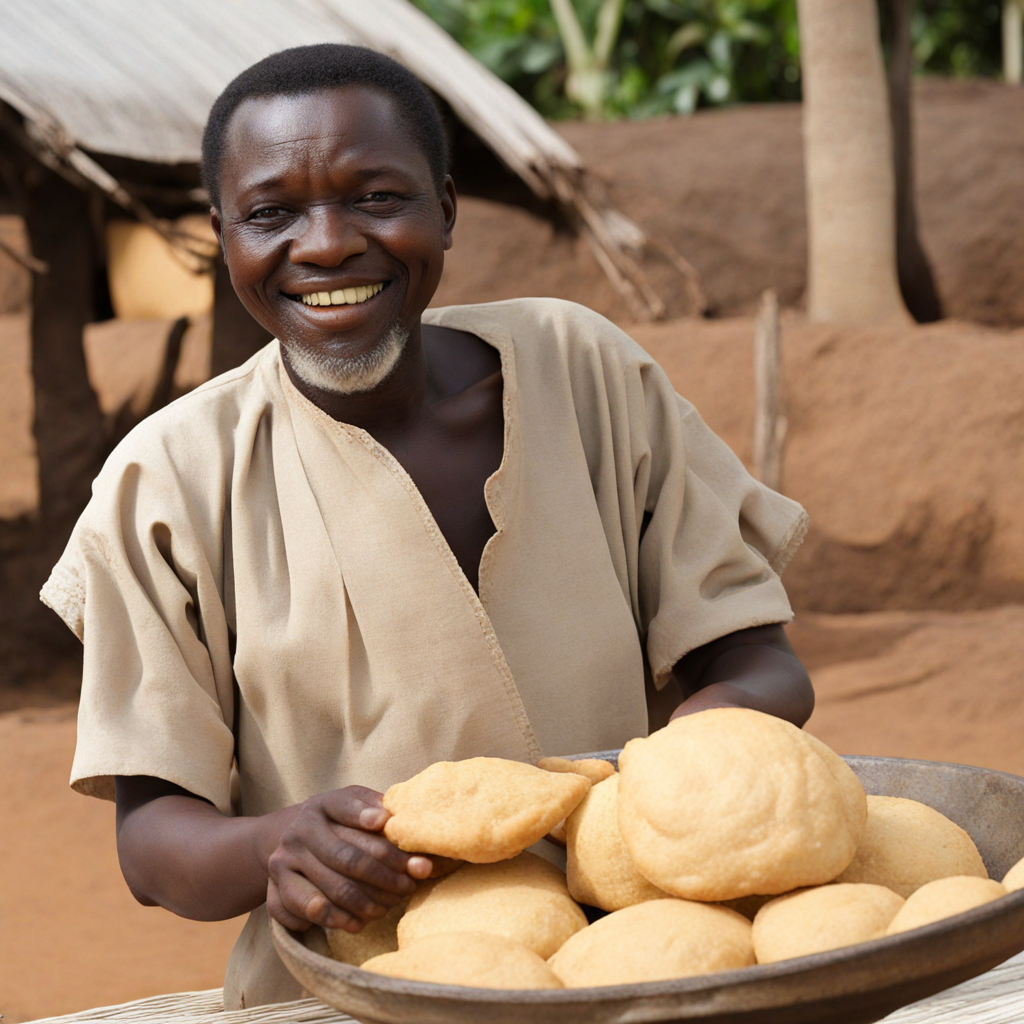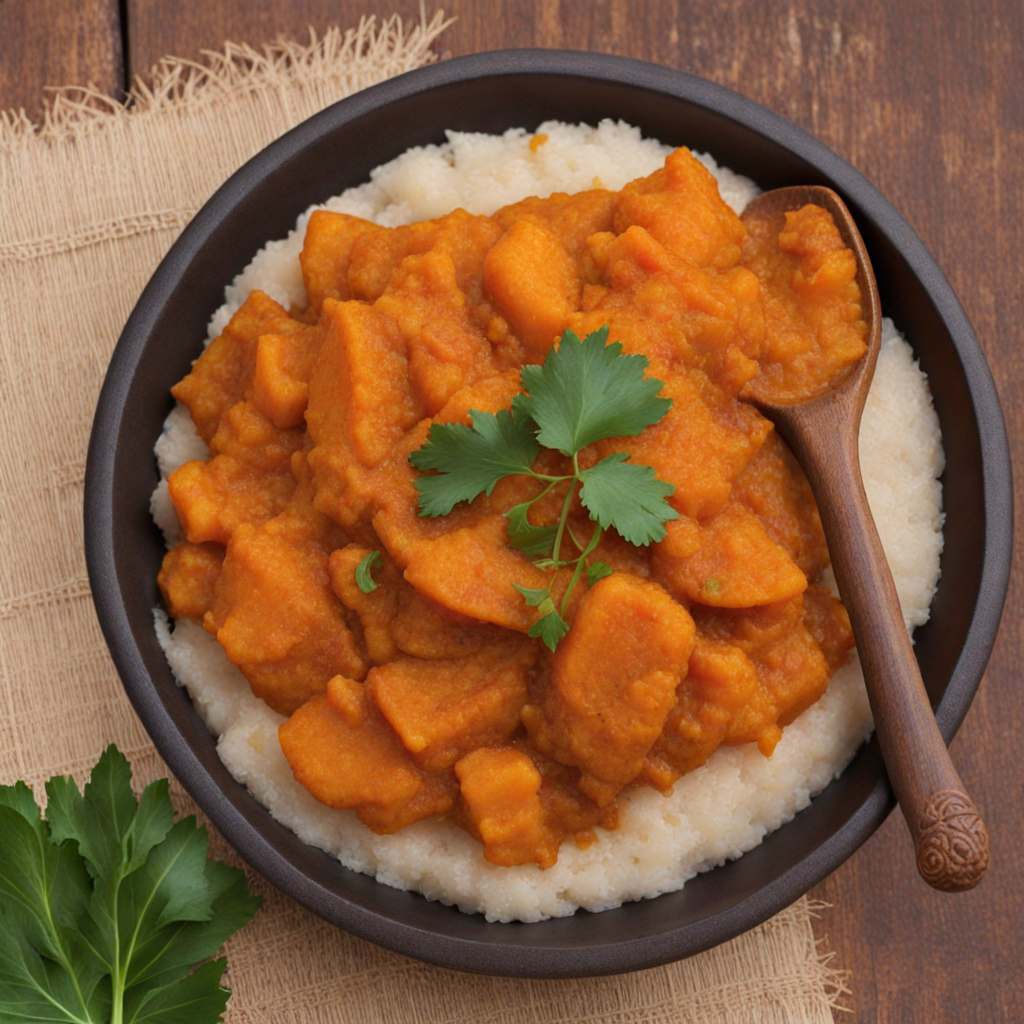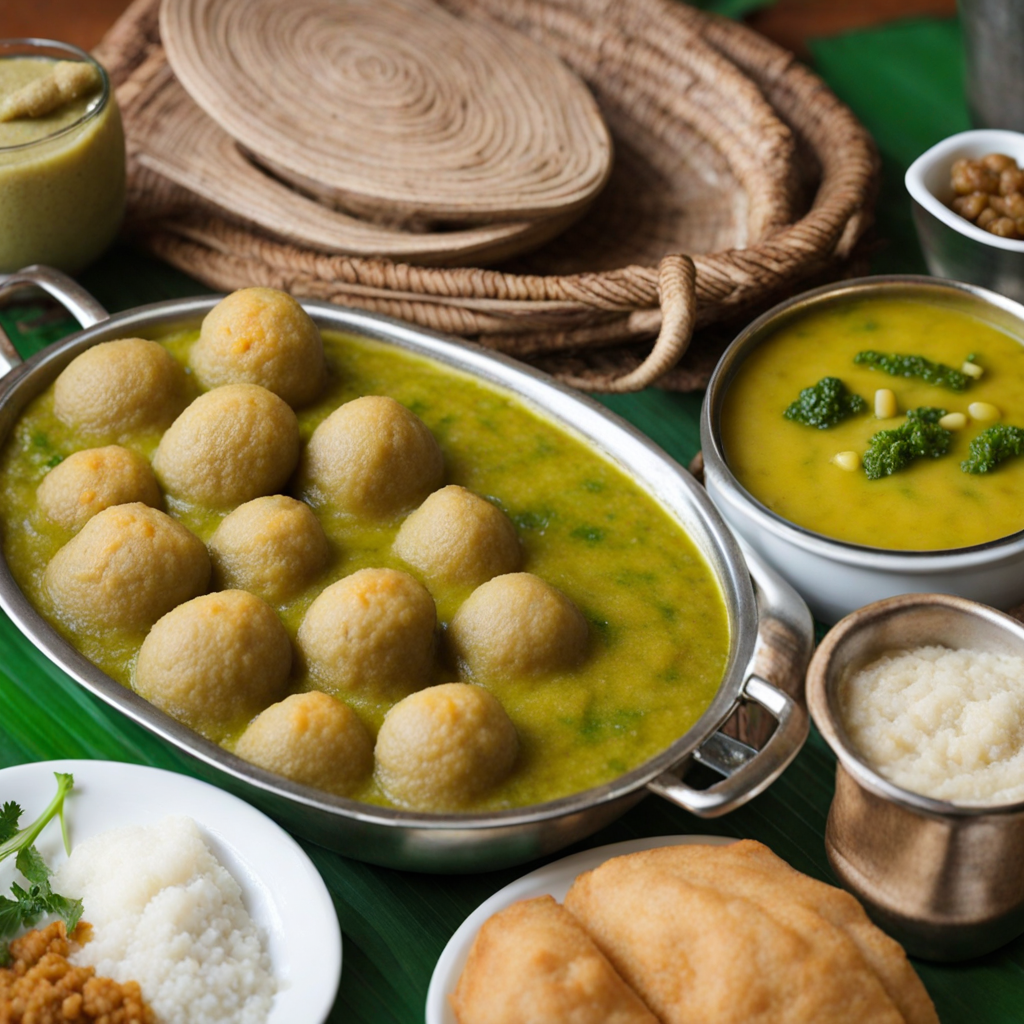Kokonte
Kokonte is a traditional Ghanaian dish made primarily from dried and pounded cassava, known as "cassava flour" or "kokonte flour." The preparation of kokonte begins with the careful selection of mature cassava roots, which are peeled, boiled, and then dried in the sun until they reach the right consistency. Once dried, the cassava is pounded into a fine flour, which is the key ingredient in this unique dish. Kokonte has a distinct earthy flavor, and its texture can be described as dense and slightly grainy, offering a hearty and satisfying experience with every bite. The dish is typically served as a side alongside rich and flavorful soups or stews, such as groundnut soup or light soup with meat, fish, or vegetables. The robust taste of kokonte complements these rich sauces beautifully, allowing the flavors to meld together on the palate. It is often shaped into small balls or served as a thick porridge, making it versatile for different dining experiences. The combination of kokonte with a savory soup creates a comforting meal that warms both the body and soul. Kokonte is not only a staple in many Ghanaian households but also holds cultural significance, often enjoyed during festive occasions and communal gatherings. As a dish, it reflects the resourcefulness of Ghanaian cuisine, turning simple ingredients into a beloved staple that showcases the rich agricultural heritage of the country. For those adventurous enough to try kokonte, it offers a delightful journey into Ghanaian culinary traditions, providing a taste that is both unique and deeply rooted in the nation's history.
How It Became This Dish
The History of Kokonte: A Culinary Gem of Ghana Kokonte, often affectionately referred to as "the swallows," is a cherished dish in Ghana, particularly among the Akan people. This traditional Ghanaian food stands out not only for its unique texture and earthy flavor but also for its deep-rooted cultural significance and historical backdrop. Its story is one of resilience, adaptation, and community, tracing back to the indigenous practices of food preparation and the impact of colonial influences. #### Origins of Kokonte The origins of Kokonte can be traced back to the early agricultural practices of the Akan people and other ethnic groups in Ghana. The primary ingredient in Kokonte is dried cassava, or manioc, which is processed into flour. Cassava, originally from South America, was brought to Africa by Portuguese explorers in the 16th century. The crop thrived in the tropical climates of West Africa, becoming a staple food due to its adaptability and resilience in various soil types. In Ghana, cassava has become integral to the diet, providing a reliable source of carbohydrates. The process of making Kokonte is labor-intensive, beginning with peeling and soaking fresh cassava roots, which are then dried and ground into a fine flour. The resulting powder is mixed with water to form a dough, which is then cooked into a thick, gelatinous form. This preparation method is reminiscent of many traditional African foods that utilize local ingredients and techniques, showcasing the ingenuity of indigenous communities. #### Cultural Significance Kokonte is more than just a meal; it is a symbol of cultural identity and heritage in Ghana. Traditionally, it is served with rich soups or stews, often made with groundnut (peanut), palm oil, or meat, adding layers of flavor and nutrients. It is commonly enjoyed during communal gatherings, celebrations, and significant life events, such as weddings and festivals. Sharing Kokonte among family and friends fosters a sense of unity and belonging, reinforcing social bonds within communities. The dish is particularly significant among the Dagbani-speaking people of Northern Ghana, where it is known as "Kokonte" or "fufu." Here, it is often paired with light soup or groundnut soup, showcasing regional variations that reflect local tastes and ingredients. In the southern regions, Kokonte is frequently served with a spicy pepper sauce or a rich palm oil stew, illustrating the diversity of Ghanaian cuisine. In many Ghanaian households, Kokonte is also seen as a comfort food, evoking memories of home and family gatherings. It embodies a sense of nostalgia, representing the culinary practices passed down through generations. The preparation and consumption of Kokonte often involve family members working together, instilling values of teamwork, cooperation, and respect for tradition. #### Development Over Time The history of Kokonte reflects broader social and economic changes in Ghana. During the colonial period, the introduction of new agricultural practices and crops altered the landscape of food production. Despite these changes, Kokonte has remained a staple, adapting to new circumstances while retaining its core identity. In the post-colonial era, as Ghana gained independence in 1957, there was a renewed interest in indigenous foods and culinary traditions. The government promoted self-sufficiency in food production, and Kokonte emerged as a symbol of national pride. Efforts to revitalize local agriculture and promote traditional dishes helped Kokonte regain its status as a dietary staple, particularly in rural areas where cassava cultivation continued to be a vital economic activity. In contemporary Ghana, Kokonte has evolved to meet the tastes and preferences of modern consumers. With globalization and urbanization, traditional foods have seen a resurgence in popularity, leading to a growing interest in local cuisines. Street vendors and restaurants have creatively adapted Kokonte, offering it alongside a variety of sauces and accompaniments that cater to diverse palates. This adaptability has ensured that Kokonte remains relevant in an ever-changing culinary landscape. Moreover, the push for healthy eating and the rise of the organic food movement have brought renewed attention to traditional foods like Kokonte. Its nutritional profile—rich in carbohydrates and gluten-free—makes it an appealing option for health-conscious consumers. The increasing global interest in plant-based diets has further contributed to its popularity beyond Ghana’s borders, with diaspora communities embracing and promoting Kokonte as a part of their culinary heritage. #### Challenges and Future Prospects Despite its enduring legacy, the production and consumption of Kokonte face challenges. Climate change poses a significant threat to cassava cultivation, impacting yields and food security. Additionally, the rise of processed foods and changing dietary habits among younger generations may lead to a decline in the appreciation for traditional dishes like Kokonte. However, there is a growing movement among Ghanaians to preserve and promote their culinary heritage. Initiatives aimed at educating younger generations about traditional cooking methods and the cultural significance of dishes like Kokonte are gaining momentum. Culinary schools and workshops are increasingly incorporating traditional foods into their curricula, fostering a new appreciation for Ghanaian cuisine among youth. The future of Kokonte looks promising, as it continues to adapt to new influences while holding onto its rich cultural significance. As the global community becomes more aware of the importance of food heritage and sustainability, Kokonte stands as a testament to the resilience of Ghanaian culinary traditions. #### Conclusion In summary, Kokonte is a dish steeped in history and cultural significance in Ghana. From its origins with the cassava plant to its role in communal gatherings and celebrations, Kokonte embodies the spirit of resilience and adaptation. As it continues to evolve in response to modern challenges, Kokonte remains a cherished part of Ghanaian identity, reflecting the deep connection between food, culture, and community. Its journey is not just about sustenance; it is a celebration of heritage, a symbol of unity, and a testament to the enduring nature of tradition in an ever-changing world.
You may like
Discover local flavors from Ghana







